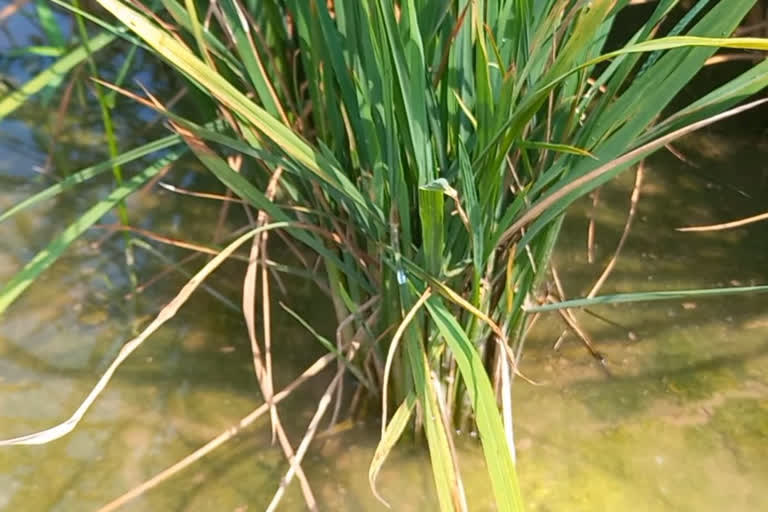Ludhiana: Following the Lumpy Skin Disease epidemic among cattle in the state, Punjab is now facing a paddy crop virus crisis across the state. Southern Rice Black-streaked Dwarf Virus (SRBSDV) has been discovered to be the reason behind the agricultural menace, with paddy in districts including Ludhiana, Gurdaspur, Hoshiarpur, Sri Fatehgarh Sahib, Mohali, and others being hit with the virus that has so far partially damaged crop production in the northern state.
Speaking to ETV Bharat, Dr Mandeep Singh Hunjan, associated with the Department of Plant Pathology of the Punjab Agricultural University (PAU), said that the disease was mostly seen in the riverine areas in the state, especially those near the Sutlej. "There is an effect of this disease in parts of Hoshiarpur, Patiala, Ropar, Ludhiana, etc. In these areas, especially along the Sutlej, the disease has affected crop production at around five to seven percent," he said.
"The virus is observed more in crops planted between June 15 and 25, rather than those planted after June 25. There is no particular spray or drug-based treatment for this disease, as it occurs due to a virus. There have been recommendations from the Punjab Agricultural University regarding preventing the spread of the disease from one plant to the other.
Also read: MBA graduate adopts organic farming in Kodaikanal to inspire others
Paddy crop should be monitored from time to time, and it is also very important to protect it from white backed plant hoppers with medicine," Hunjan said. The virus transmits in a 'persistent and propagative manner', read a recent PAU statement regarding the disease. A few plants in the field should be slightly tilted and tapped 2-3 times at the base at weekly intervals. White Backed Plant Hopper nymphs or adults, if present, will be seen floating on water, the university statement further said.
"The infected plants were stunted with narrow erect leaves, with both roots and shoots of the plants severely affected. In severely infected rice fields, the infected plants showed withering," the statement noted. The analysis of soil and plant samples collected from the affected fields showed no relationship between stunting and nutrition deficiency, it further said.
"SRBSDV is a double standard RNA virus that was first reported in 2001 from Southern China. The symptoms produced on the rice, as well as the genome structure of this virus, resemble that of rice black-streaked dwarf virus but as this virus was first reported from Southern China, this virus was named southern rice black-streaked dwarf virus," the university statement further explained.



